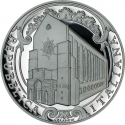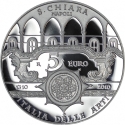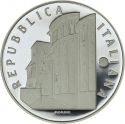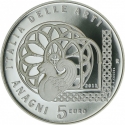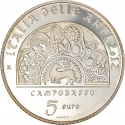You are about to finish your registration. Please check your mailbox (including spam folder). There should be a letter with a confirmation link. Check setting to make sure that your e-mail address is correct.
Send letter againDescription
Florence is a city in Central Italy and the capital city of the Tuscany region. Florence was a centre of medieval European trade and finance and one of the wealthiest cities of that era. It is considered by many academics to have been the birthplace of the Renaissance, becoming a major artistic, cultural, commercial, political, economic and financial center. From 1865 to 1871 the city served as the capital of the Kingdom of Italy (established in 1861). The Florentine dialect forms the base of Standard Italian and it became the language of culture throughout Italy due to the prestige of the masterpieces by Dante Alighieri, Petrarch, Giovanni Boccaccio, Niccolò Machiavelli and Francesco Guicciardini.
Artist: Annalisa Masini
Obverse

|
Depicts the dome of Florence Cathedral. In the background, the clover-shaped layout of the chancel. Above, the arch-shaped inscription “REPUBBLICA”, between two fleurs-de-lys; in exergue, the inscription “ITALIANA” and, between two fleurs-de-lys, the name of the designer “A. MASINI”. REPUBBLICA ITALIANA |
|---|---|
Reverse

|
The shape of an octagon, an element recreated in the drum of the dome by the architect Filippo Brunelleschi, forms the border for the detail of the “Dancing Putti” from the cantoria by Luca della Robbia (Museo dell’Opera del Duomo in Florence). Above, the arch-shaped inscription “Italy of Arts”; on the left, the letter “R” identifying the Mint of Rome, and “2019”, the year of the coin’s issue; on the right, “Florence” and a fleur-de-lys, symbol of the Tuscan capital; below, the value “5 EURO”. ITALIA DELLE ARTI |
| Edge |
5 Euro
Italy of Arts
Florence - Tuscany
Subscribe series
KM#
Italy of Arts
Florence - Tuscany


